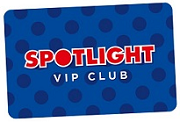 | ||
| Your browser is not supported. | ||
|
Please browse our site using any of the following options:
| ||
Choosing Pens, Pencils & Markers
All you need for every kind of mark-making.
Pencils
Lead pencils
An art and craft essential, used for everything from drawing to note taking.
- These vary in hardness (H) and blackness (B). 9H is very hard, and leaves a light mark on paper, while 9B is very soft, and leaves thick, dark marks.
- Each pencil is best suited to different tasks.
- Darker, softer pencils lend themselves to loose and expressive work like sketching, where you are aiming for variation in line and tone.
- Lighter, harder pencils are good for more precise work, where you want sharp, clean lines.
- The most commonly used pencil, HB, represents the middle of that scale.
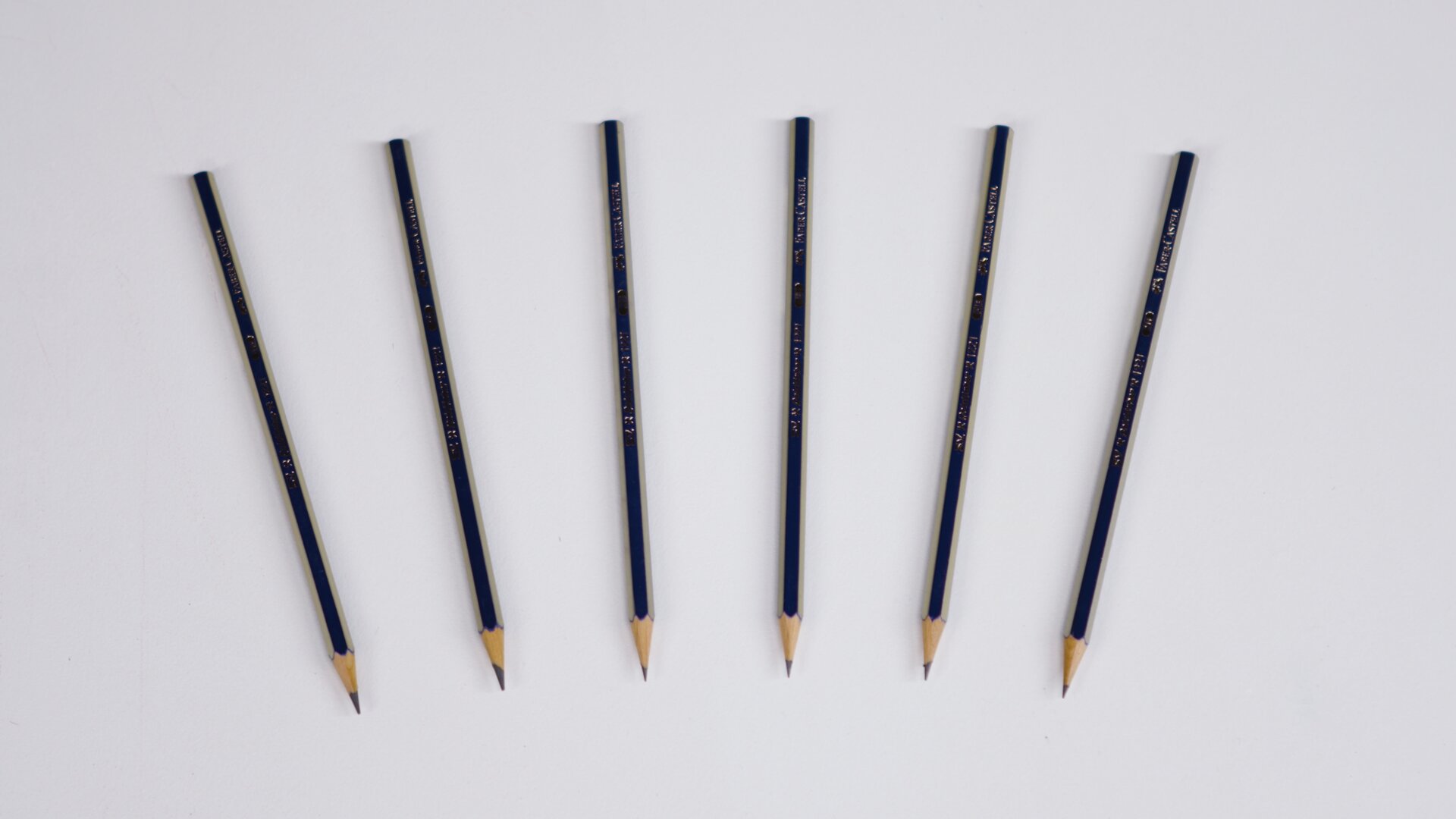
Mechanical pencils
Mechanical pencils have refillable leads, so they never go blunt or need sharpening like traditional pencils.
- They're great for technical drawing or note taking because of their finer points
- They travel well in pencil cases because of their hard metal or plastic bodies.
- They are available in a range of lead sizes, from very fine 0.2mm through to a chunky 5.6mm. Most standard mechanical pencils take a 0.5mm lead, which means these refills are most readily available.
- Lead refills vary on the same hardness scale as regular pencils, but are generally available in HB and 2B. Softer leads break too easily in this form.
- It's important to make sure you have spare refills so your pencil is always ready to be used.
Coloured pencils
Easy to get startarted with, yet with infinite potential for artistic growth and expression, coloured pencils are among the most accessible and versatile creative tools.
- A set of 12 is a good place to start. This will give you primary and secondary colours along with several others like black and pink.
- Inexpensive pencils are good for everyday use, while those designed for artists become more expensive.
- The coloured core of a pencil is made with pigment (the colour) and binding agents that hold the pigment together.
- Artist quality coloured pencils have more pigment, and less binding agent.
- The depth and lightfastness of high quality pigment is also greater.
Watercolour pencils
Watercolor pencils allow you to enjoy aspects of both drawing and painting.
- It's easy to sketch out the shapes and compositions you want with pencils, before adding water to complete your artwork.
- Combining sketching and painting allows you to blend colours in dynamic ways.
- Unlike the wax or oil used in regular coloured pencils, the binding agent that holds the pigment in these pencils is water soluble. This means that when you add water, the pigment can be moved and blended like paint.
- When you're shopping, remember you'll need a paintbrush to go with your pencils.
- Paper choice matters when using any wet media. You'll need to use watercolour paper or heavyweight paper if you don't want the water to warp it.
Intended Use | Recommended |
Colouring
| Coloured pencils, watercolour pencils |
Sketching and art | Coloured pencils, watercolour pencils, lead pencils, mechanical pencils |
Technical drawing
| Mechanical pencils |
Writing
| Lead pencils, mechanical pencils |
Use on dark or coloured surfaces
| Coloured pencils |
Pens
Fineliners
Fineliners are generally used for drawing and sketching, but many people like to use them for writing too.
- Fineliners are most commonly found in black, but available in a wide variety of colours. Coloured fineliners are often used by students for colour coded note taking.
- Their fast drying ink makes fineliners ideal for left handed people, as it doesn't smudge easily.
- When choosing fineliners it's important to consider several factors:
- Size: tips vary from super fine (0.03mm), to bold (1mm)
- Ink type: fineliners can have either water based, or oil based ink.
- Water based ink is most widely used, and has the advantage of being less likely to bleed through your paper.
- Oil based inks work on glossy surfaces like photographs, so can be more versatile. They are also better for mixed media work as they do not bleed when interacting with wet media like paint.
Ballpoint pens
Also known as biros, ballpoint pens contain coloured ink, suspended in oil. They are incredibly versatile, which makes them the most widely used writing tool in the world. There is an enormous range to choose from and there are several broad qualities in which they vary.
- Colour
- Most people use black or blue, but red is useful for teachers in marking and correction.
- Other colours such as green and purple can also be found.
- Tip size
- As with many other writing implements, the size of the tip varies.
- Some brands use a scale measured in fractions of a millimeter, while others simply designate fine or medium.
- Retractable
- Pens with retractable tips make it easy to avoid making unintentional marks on the inside of pockets, pencil cases, and on other surfaces.
- Some retractable pens have a twist mechanism, while others click open and closed with a button or hook.
- Refillable
- The majority of ballpoint pens are disposable, which makes them inexpensive, and lightweight.
- Refillable ballpoint pens have the advantage of being more environmentally friendly, as their inner ink cartridge can be removed and replaced.
- Refillable ballpoint pens have more durable, and often more heavyweight bodies, which many people prefer as they feel nicer in the hand.
Gel pens
Unlike ballpoint pens, gel pens pigment is distributed in water based gel. This makes for some significant differences.
- The higher viscosity of gel allows for a greater concentration of pigment to be transferred to the writing surface.
- This extra pigment makes the pen's marks highly opaque, so they are great for writing on dark or coloured surfaces.
- Gel pens come in heaps of bright colours, as well as glitter and metallic inks.
- They can smudge more easily than some other pens because the water based gel takes longer to dry.
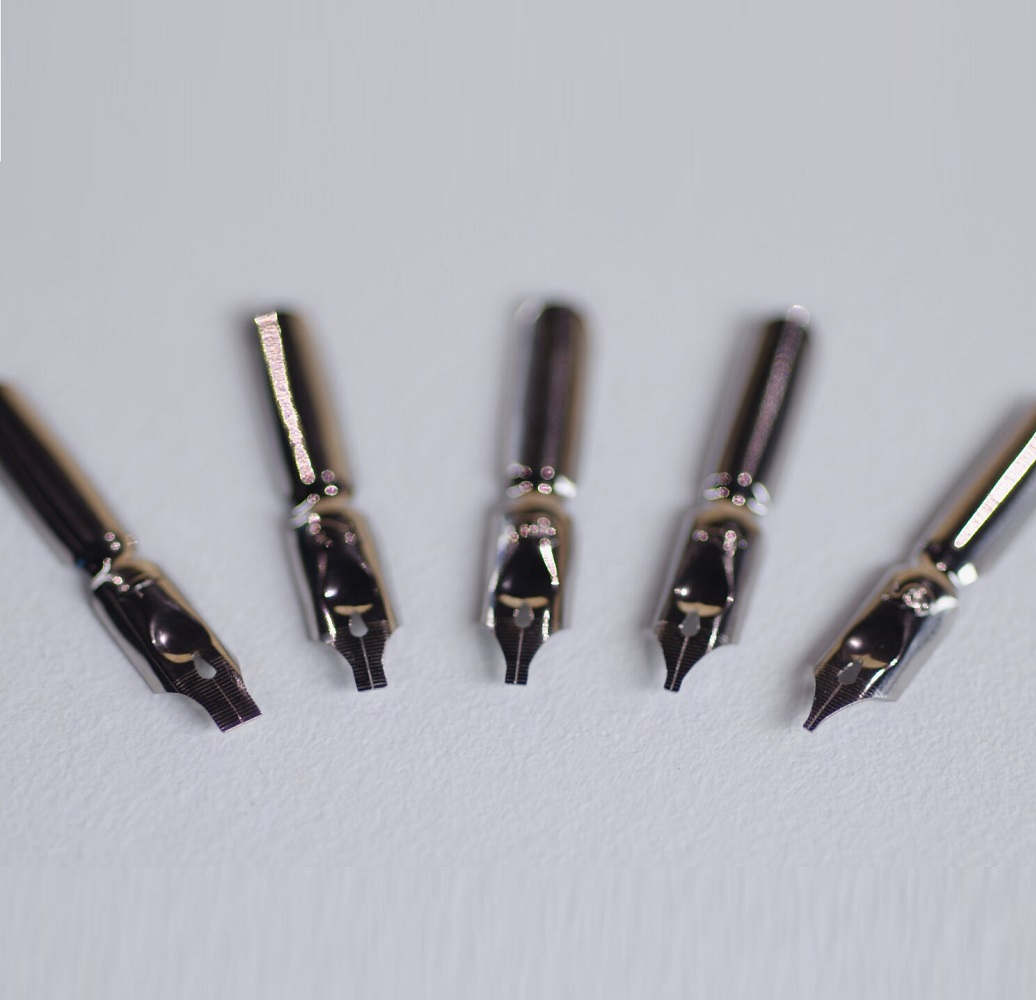
Calligraphy pens
Calligraphy is an increasingly popular craft, and is wonderful for making unique greeting cards, table settings, gift tags, and even custom making special occasion stationery.
- There are two categories of calligraphy pen:
- Dip pens, with nibs that are dipped in ink before writing
- Cartridge pens, with an ink cartridge inside the barrel of the pen that provides a steady flow of ink as you write.
- Nibs vary in width, and each produces a different effect.
- Calligraphy ink can be found in a wide variety of colours, including metallics like silver and gold.
Intended use | Recommended |
Everyday writing | Biro, fineliner |
Decorative writing | Calligraphy pen, fineliner, gel pen |
Technical drawing | Fineliner |
Sketching and art | Fineliner |
Use on dark or coloured surfaces | Gel pen |
Use on glossy surfaces | Fineliner (oil based) |
Markers
Whether you're using them for art, or more everyday uses, there's a marker out there for every purpose.
Coloured markers
Used for every kind of art, from playful colouring to professional masterpieces.
- Coloured markers for art and craft can generally be divided into two categories
- Water based
- Usually washable.
- Among the more affordable markers.
- Widely available in multipacks with a selection of colours.
- Solvent based
- Unlike water based markers, the pigment in these is usually suspended in alcohol, or other solvent. This makes them quick to dry.
- An alcohol based colourless blender marker or blender fluid can be used to blend colours, allowing artists to achieve more subtle blending and gradation of colour.
- These are best for artists because they don't create streaky marks.
- They are also resistant to bleeding and fading, so the artwork produced with them is longer lasting.
- Water based
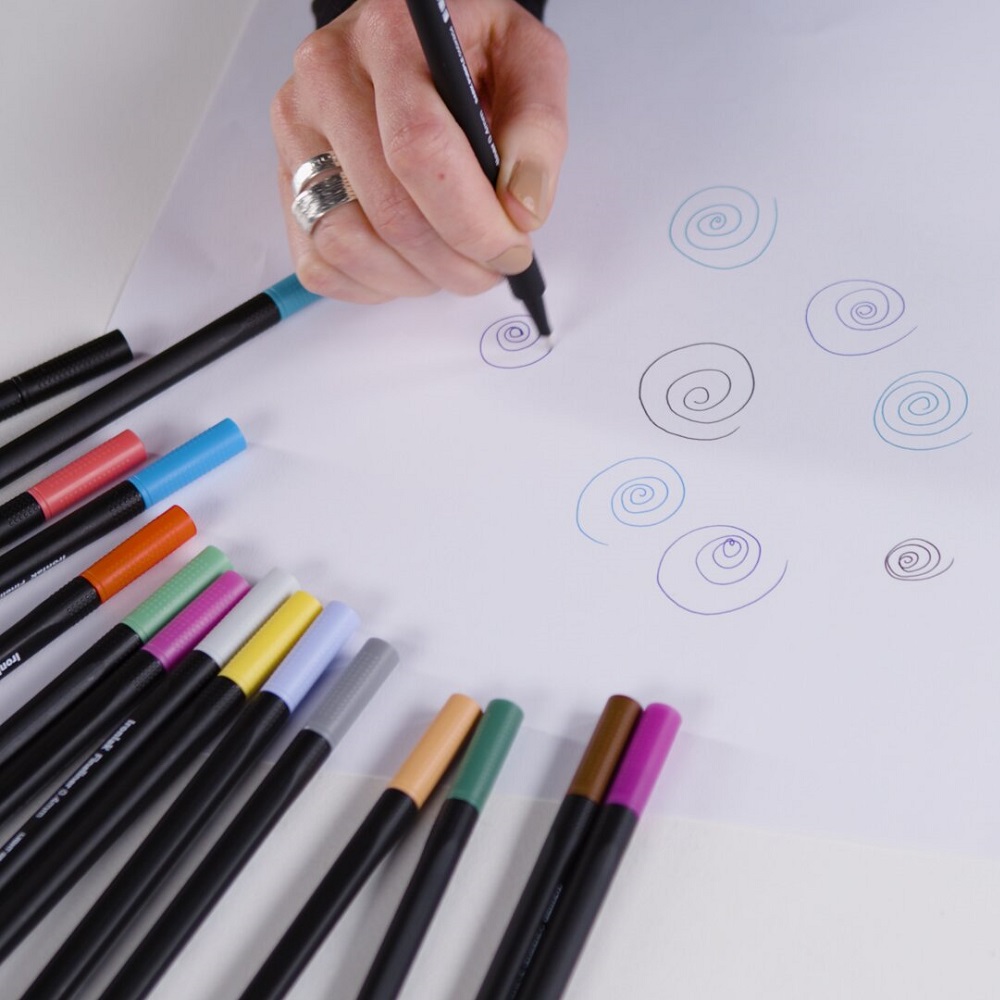
Permanent markers
If you want your label, note, or drawing to stay put on any surface, you need a permanent marker.
- These differ from other coloured markers because they are oil based. This makes them fade resistant, water fast, and suitable for writing on pretty much anything from wood, to plastic to glass.
- Permanent markers dry quickly, and don't smudge easily.
Fabric markers
Some markers are designed specifically for use on fabric, and can be great for decorating clothes and shoes, or simply labelling things like hats and uniforms so they don't get lost at school.
- Delivering the colour via a pen rather than a brush gives more control, and finer lines.
- Most fabric markers need to be heat set in order to be fully washable and fade resistant.
Brush markers
Brush markers have flexible tips just like paintbrushes, and allow you to write and draw expressively, creating flowing lines.
- Brush markers come in a wide variety of tip sizes. Finer tips are ideal for detailed work, while larger ones allow for thick, flowing lines.
- The flexibility of the tip is also a consideration when choosing a brush marker. The more flexible the tip, the easier it is to create dramatic lines by varying the application of pressure. Stiffer tips are good for more controlled and detailed artworks.
- As with any pencil or marker, the quality and quantity of pigment in each brush marker will vary. This will affect brightness, lightfastness, and the longevity of the artwork you create.
- Brush markers are used for sketching, colouring, and lettering.
Paint pens
Paint pens deliver highly opaque paint in a smooth flowing and easy to control way.
- Usually activated by a pump action mechanism to get paint flowing through the nib.
- Paint pens can be either water or oil based. Oil based paints are generally more permanent and harder to remove.
- Highly opaque, with vibrant colours, these pens work very well on dark or coloured papers.
- Paint pens are not permanent on non-porous surfaces, so they are often used in shop windows, blackboards, mirrors, and other similar surfaces for signage and other notices.
Intended Use | Recommended |
Decorative writing | Brush marker |
Marking surfaces other than paper | Permanent marker, paint pen, fabric marker |
Signwriting | Paint pen |
Use on dark or coloured surfaces | Paint pen |
Use on fabric | Fabric marker, permanent marker |
Colouring | Coloured marker (water based) |
Sketching and art | Coloured marker (solvent based), paint pen |
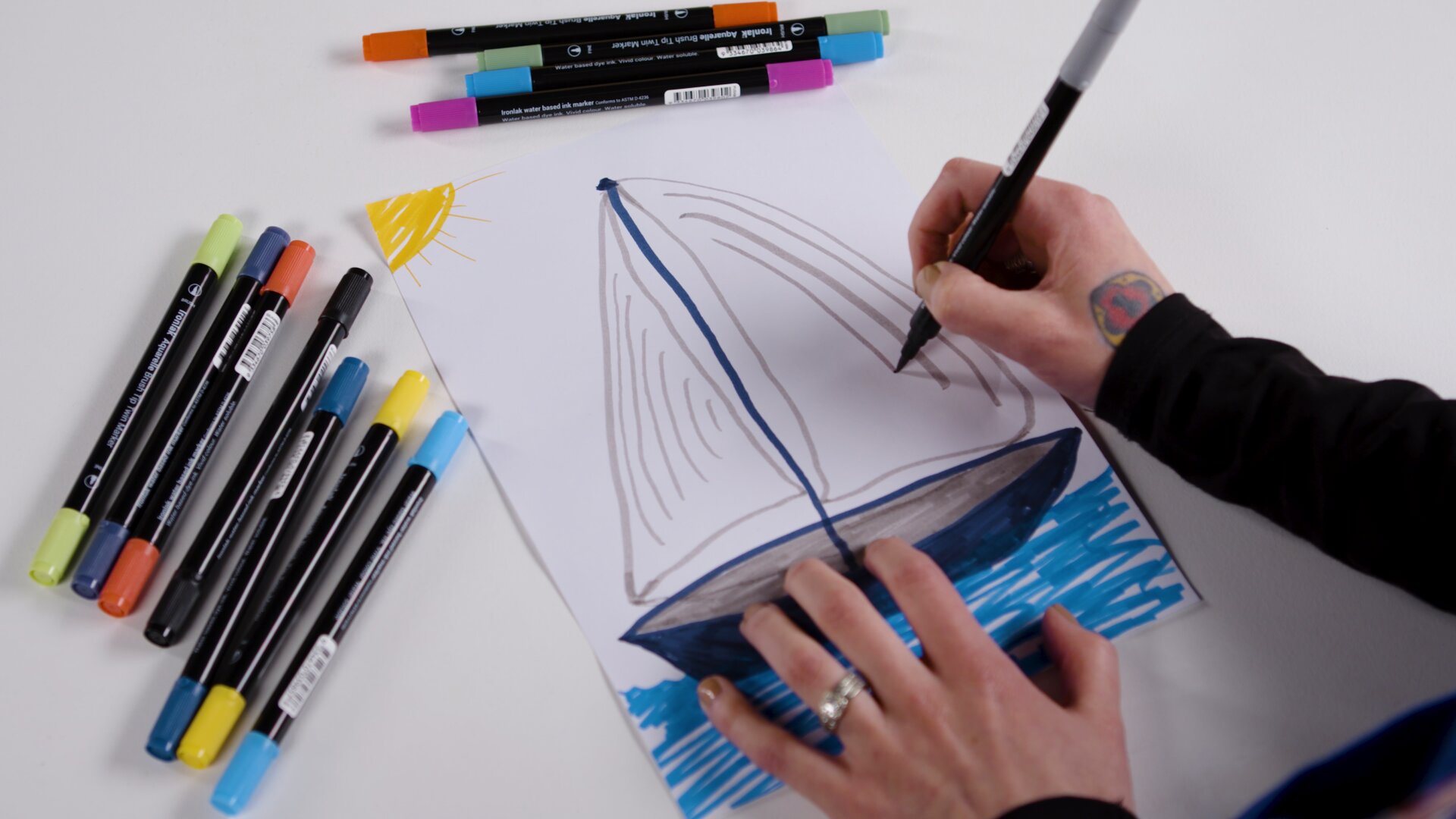
Still looking for craft & hobbies inspiration?
Check out Spotlight's range of Craft & Hobbies available online, visit your local store or contact one of our experts for assistance.




